Museum Artifacts
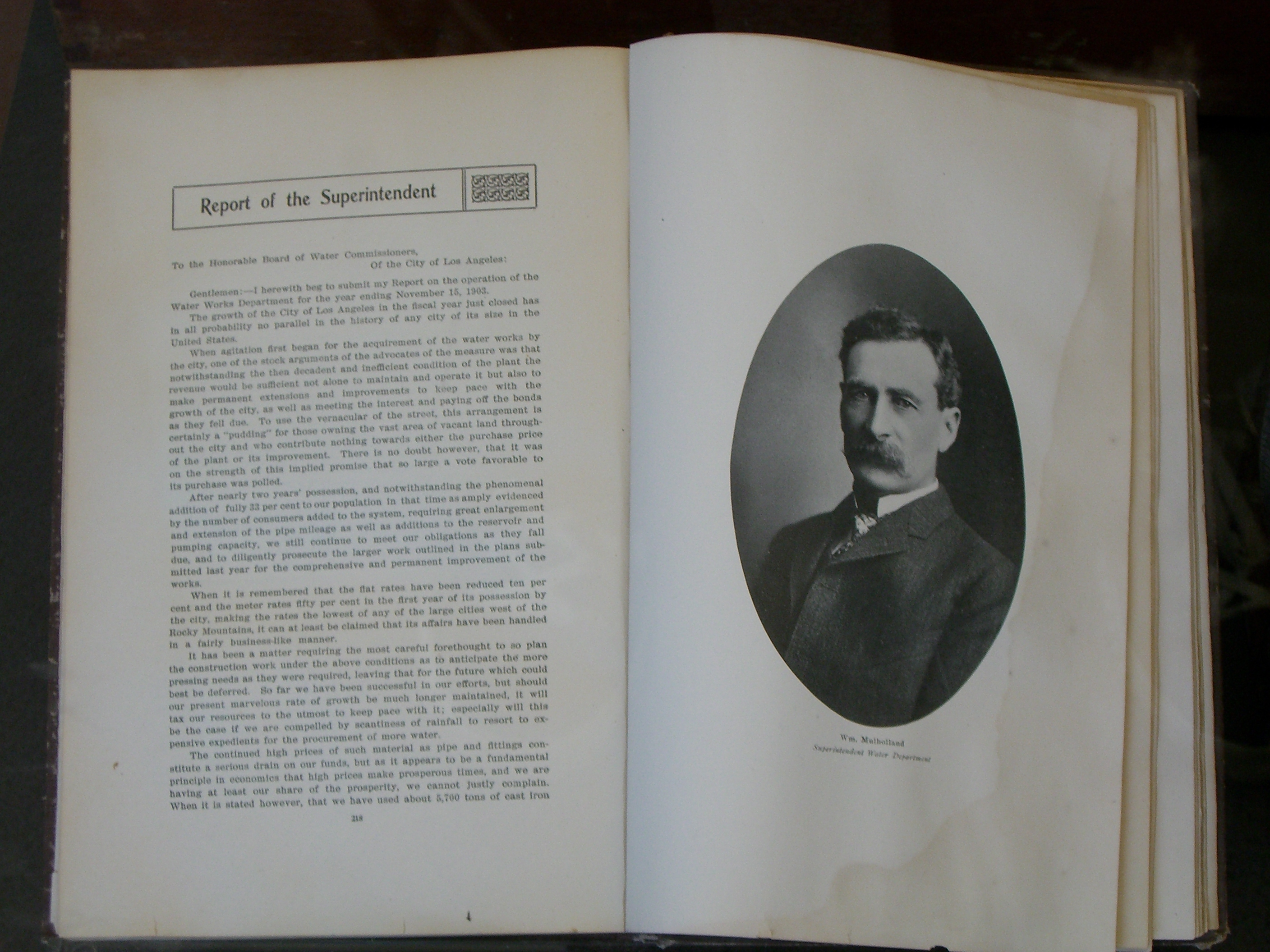 |
| Above is a page from the annual report of the Water Works Department of 1903 which tells the DWP story at the time. |
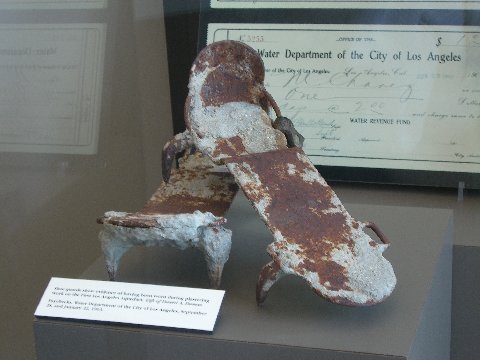 |
| Above are shoe guards used in the building of the first aqueduct, with paycheck above it. |
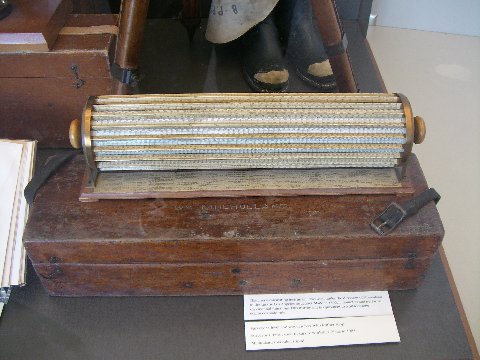 |
| Thatcher's calculating instrument - a slide rule used at Mulholland's direction to design the aqueduct. Made in 1896, it is the equivalent of an engineer's 30 foot slide rule. |
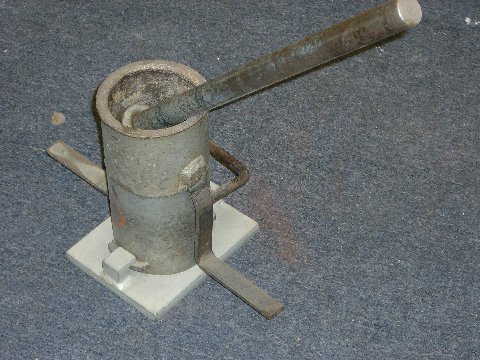 |
| Soil density tester designed by a DWP engineer, for whom it was named. |
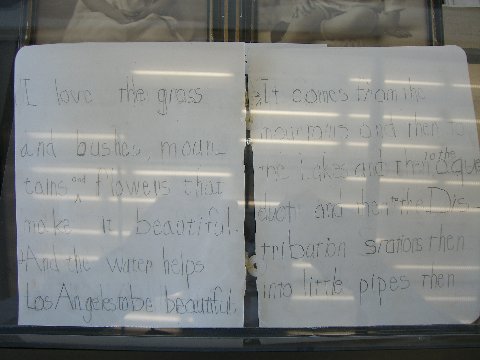 |
| Pages from Catherine Mulholland's third grade booklet written after a visit to her grandfather in 1934. Click HERE to see more in Catherine Mulholland Collection. |
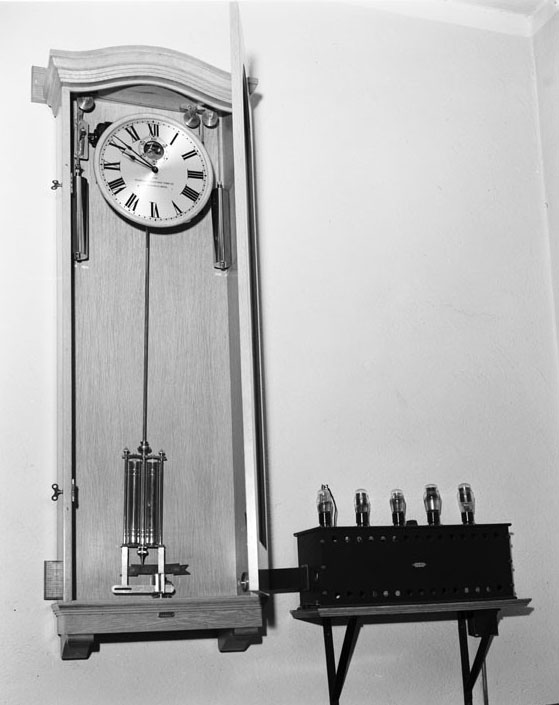 |
|
| (1940)* – "Big Ben" of Bureau of Water and Power Standards Laboratory used in calibrating watt-hour meters - black box at right contains electric eye which counts swings of clock pendulum. |
From the LADWP Historic Archive Time marches on and, in Los Angeles, it marches to a cadence regulated from Boulder Power Plant by an electrical “Big Ben” whose accuracy is checked daily by methods which include astronomical observations of fixed stars which indicate the rotation of the earth. In turn, every one of the estimated 234,000 electric clocks connected to the municipal Bureau of Power and Light lines is kept to split-second accuracy by the master clock at Boulder, assuming of course that the local clocks are set to the correct time when being started. To accomplish this miracle the master clock performs another miracle by regulating the speed of the giant generators so that the 500 ton whirling rotors produce exactly 7200 pulses per minute. These pulsations are transmitted 266 miles to the City, where they keep clocks in homes, factories and stores on time, all the time. At 9 am each day the time of the master clock and a representative clock on the municipal system are checked against time signals originating in the Georgetown Heights Naval Observatory in Washington, DC. That is where expert astronomers verify the time by checking the rotation of earth through observations of light emanating from fixed stars as the light crosses a hairline in a telescope. This information is used to adjust a grand master clock which sends out signals by telegraph and radio. The radio signals leave a Navy transmitter at Arlington, Virginia at regular intervals and are picked up throughout the country. In Los Angeles the Bureau of Power and Light relays the time signals to Boulder by means of the carrier telephone system that is a part of the same transmission line that delivers power here at 275,000 volts while also giving correct time. Indicating the care devoted to maintaining accurate time service, the Boulder master clock is installed in a special room whose floor is part of the Dam proper and not subject to any vibration from the heavy machinery in the Power Plant. Temperature of the room is maintained constantly at 85 degrees Fahrenheit. A duplicate clock is set up in the same room so that there will be no interruption to this function in the remote event of failure on the part of Boulder’s “Big Ben.” The clock has a high grade pendulum movement kept in motion by a standard self-starting clock motor. Any tendency for the motor to run faster or slower than the pendulum affects a mechanical connection between the two which is arranged so that the adjustment of the frequency controller is changed and the speed of the generators corrected to the rate of 7200 pulsations per minute.^ |
References
* DWP - LA Public Library Image Archive
< Back
Menu
- Home
- Mission
- Museum
- Mulholland Service Award
- Major Efforts
- Board Officers and Directors
- Positions on Owens Valley and the City of Los Angeles Issues
- Legislative Positions on
Water Issues
- Legislative Positions on
Energy Issues
- Recent Newsletters
- Historical Op Ed Pieces
- Membership
- Contact Us
- Search Index